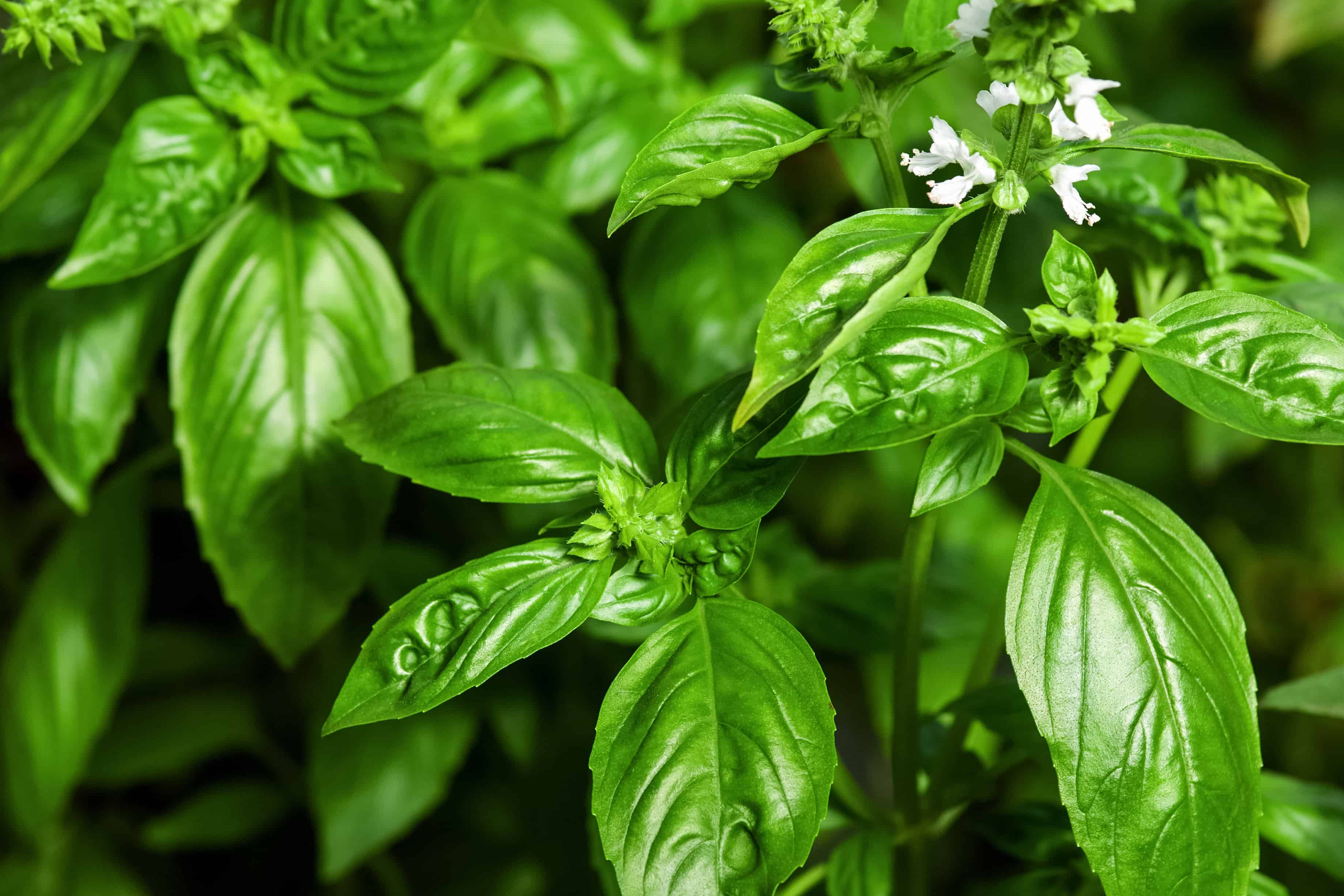Basil is a popular cooking herb that belongs to the genus Ocimum in the Lamiaceae family. It has a distinctive slight anise and cloves aroma. This delicious herb has a flavor that is often described as sweet with a mildly peppery taste. Basil is common in many dishes, including salads, pasta sauces, pesto, soups, etc. This herb is a must in any chef’s repertoire of culinary arsenal.
Sweet basil is by far the most used, but a variety of other types are available, like Thai Basil, holy basil, purple basil, and cinnamon basil, to name a few.
This herb of herbs is relatively easy to grow in warmer environments, and you will enjoy an abundance of basil leaves throughout the growing season if you follow a few important guidelines and tips. Here is a list of handy ideas to ensure you have a great crop of this wonder herb.
How Often Should You Water Basil Plants?
Basil plants thrive in consistently moist soil, but the soil should never be waterlogged. The frequency of watering basil plants depends on various factors, including the climate, soil type, pot/container size, and overall environmental conditions.
As a rule of thumb, you should water your basil plants every 2 to 3 days during warmer weather and less often, perhaps every 4 to 7 days, during cooler periods. You should always check the soil moisture before watering the plants and adjust the watering accordingly. And remember, it is always better to under-water than to over-water. Root rot is almost impossible to remedy when the disease already exists.
Below are some tips to help you to apply the appropriate watering regime depending on where your basil is planted.
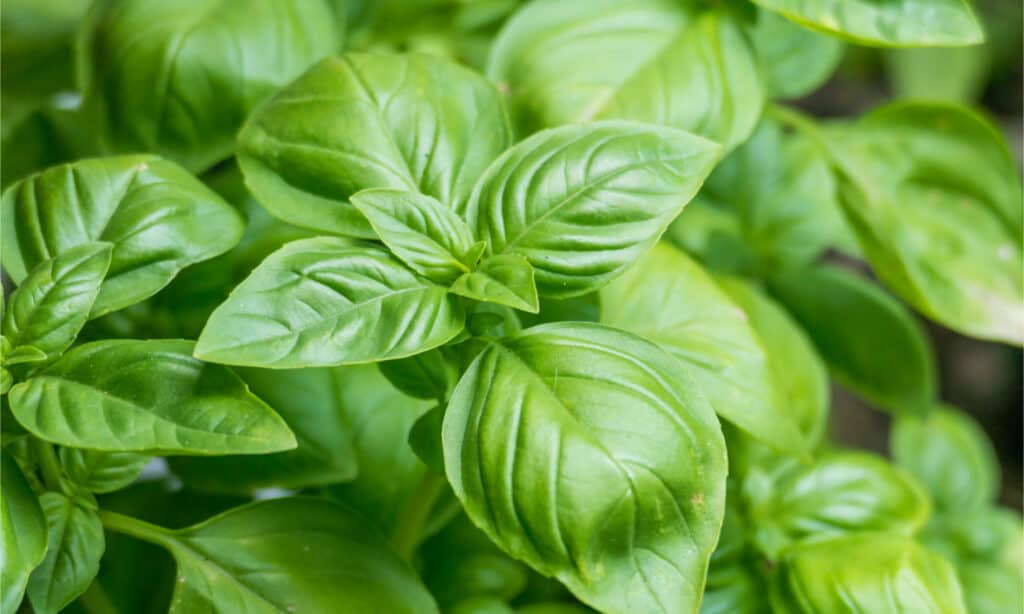
Basil must have at least 6-8 hours of sunlight daily.
©David Jalda/Shutterstock.com
Potted Basil
Proper watering is crucial for the health and well-being of basil plants grown in pots. Basil prefers consistently moist but well-draining soil. The watering frequency will depend on various factors, including the size of the container, the type of potting mix, the local climate, and the growth stage.
Before you water the plants, stick your finger into the soil. If the ground feels dry, you know it’s time to water. You need to ensure the pots have proper drainage to prevent the dirt from getting waterlogged.
In hot, dry climates, especially when it has been windy, basil in pots will need more frequent watering. Newly planted basil seedlings will require more regular watering than established plants. As time progresses, you’ll better understand when your basil plants need water.
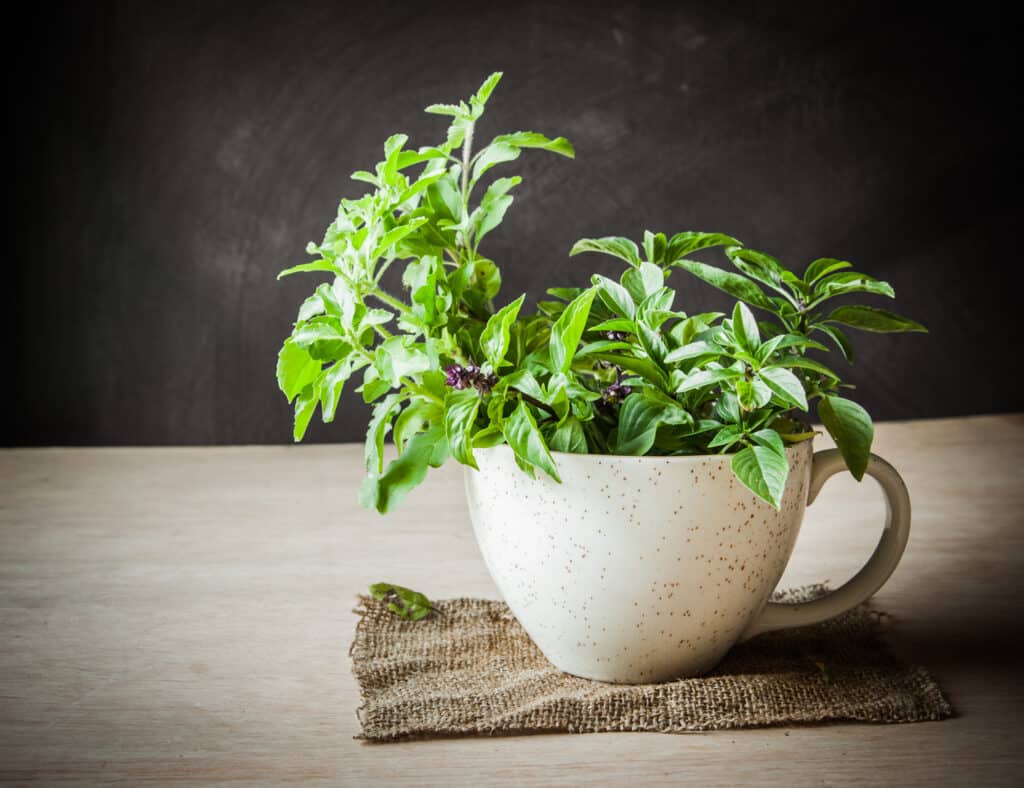
Basil grows well in pots that have proper draining holes.
©A Studios/Shutterstock.com
Basil in Raised Beds
When you want to grow larger quantities of basil plants, planting in pots will not be sufficient. So consider planting your basil in raised beds. However, there are some specific considerations for raised beds that you should keep in mind. Raised beds drain better than containers, and the larger soil volume can hold moisture longer.
With basil growing in raised beds, you have a larger exposed surface area, and you must consider the evaporation levels in your watering frequency. Mulching is your best friend when it comes to raised beds. On the other hand, you must design your raised beds so that the excess water can escape, especially when it rains.
When you apply water, it’s important to water deeply so that the moisture reaches the root zone of the basil plants. Shallow watering can lead to shallow root development and less drought-resistant plants.
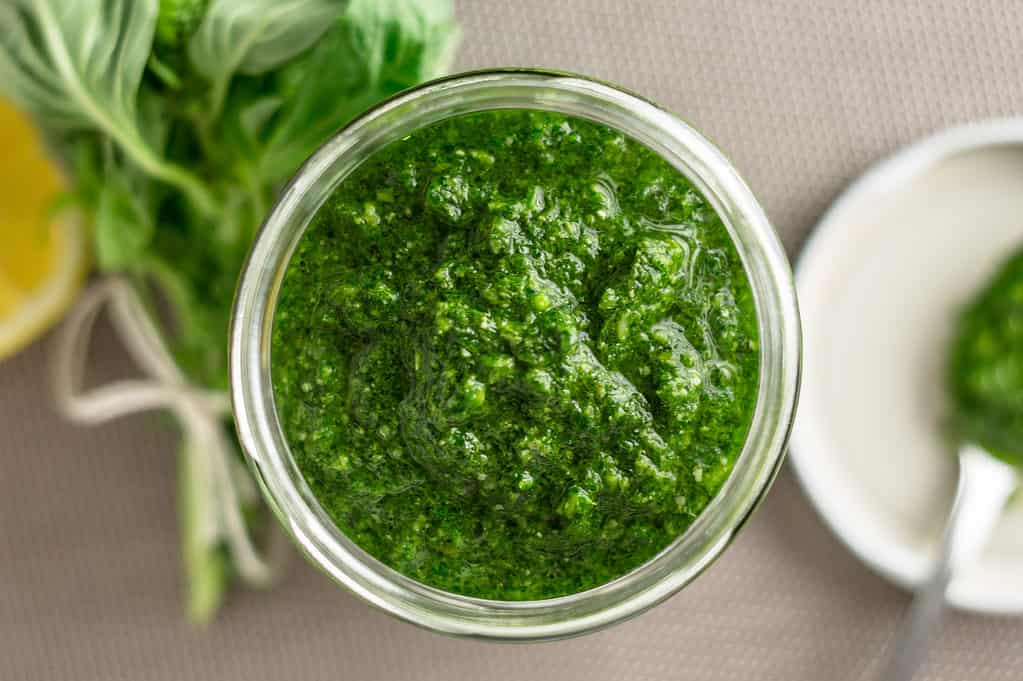
Basil is a delicious herb that you can use to make pesto and other nutritious food.
©iStock.com/Louno_M
Basil in the Ground
Watering basil planted directly into the ground requires a delicate balance between providing enough moisture for healthy growth and preventing overwatering, which can lead to root rot. Water tends to soak away quickly in the ground beds, so you must regularly inspect the moisture levels.
Newly planted seedlings require daily watering or multiple times daily on hot and windy days.
Once your basil plants are well established and deeply rooted, you can water every 2-3 days in warm, dry conditions and less frequently on cooler and wetter periods.
Basil planted directly into the ground also needs deep watering at the base of the plant rather than overhead watering to avoid wetting the foliage, which can encourage diseases. Use a watering can, a soaker hose, or a drip irrigation system for precise watering at the root zone. Apply sufficient mulch around your pants to limit water evaporation.
7 Critical Care Tips for a Wealthy Basil Harvest
1. Choosing the Right Pot or Growing Location
The size of the pot or other location where you will plant your basil will be determined by the amount of basil you plan to produce. A single plant will live happily in a pot with a diameter of 6-10 inches, but you will need a larger container if you want to plant multiple basil plants in one pot. Then again, whoever wants only one single plant!
Small or large, your pots will need draining holes to allow excess water to escape because basil does not like waterlogged soil. Where you place your pots is crucial for the plants to thrive. Sunlight is essential for healthy plants.
For larger quantities of basil, you may want to plant the herbs in raised beds or directly into the ground in open beds. Raised beds can look pretty, but they must have enough draining holes to allow excess water to escape, especially when it rains. The beds must be deep enough so that water can drain down quickly.
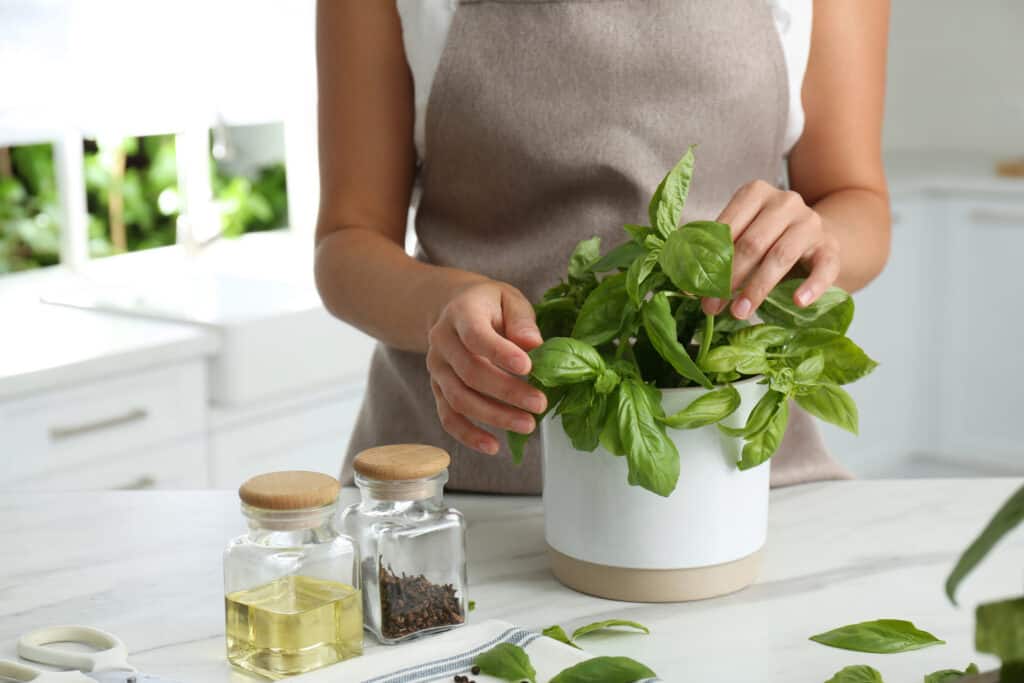
Choose the right pot for growing basil.
©iStock.com/Liudmila Chernetska
2. Let the Sun Work
Basil is a warm-weather plant, so you must create your beds with sufficient exposure to the sun during the daytime. It is best to provide basil with at least 6-8 hours of direct sunlight daily. To achieve this, your beds must be away from shady trees and buildings. If you’re growing basil indoors, place the plant near a window that faces the morning sun where it can receive adequate sunlight to thrive.
Avoid exposing basil to cold temperatures. If you’re growing basil outdoors, it is best to wait until after the last frost in your area before planting your seedlings. Temperatures below 50 degrees Fahrenheit will cause stress to your basil plants, and their growth will be negatively affected.
As far as humidity is concerned, basil will tolerate humidity levels around 40-50%. Indoor plants will not grow well if the air is too dry. You can increase the humidity by misting the plant occasionally or placing a tray of water near the plant to allow for gradual evaporation.

Basil must have at least 6-8 hours of sunlight daily.
©golfza.357/Shutterstock.com
3. Enrich Your Soil
Basil thrives in well-draining, nutrient-rich soil that provides good aeration and moisture retention. A lightweight mix formulated for herbs, vegetables, or container gardening will suit your basil plants. Additionally, you can make your mix by combining equal parts of compost, perlite, and potting soil. Avoid using heavy garden soil, as this can lead to poor drainage and the development of root diseases.
To ensure a lush harvest of healthy basil leaves, regular feeding with a fertilizer with equal or nearly equal proportions of nitrogen (N), phosphorus (P), and potassium (K). Look for a fertilizer with an N-P-K ratio around 10-10-10 or 14-14-14.
In addition, you can use an organic liquid fertilizer or a slow-release granular fertilizer. The trick is to fertilize frequently but never to over-fertilize.
Basil in containers must be fed every 2-3 weeks with a diluted fertilizer according to the manufacturer’s instructions. For the plants in raised beds and basil planted directly in the ground, apply a balanced granular, slow-release fertilizer at the start of the growing season and again after about six weeks.
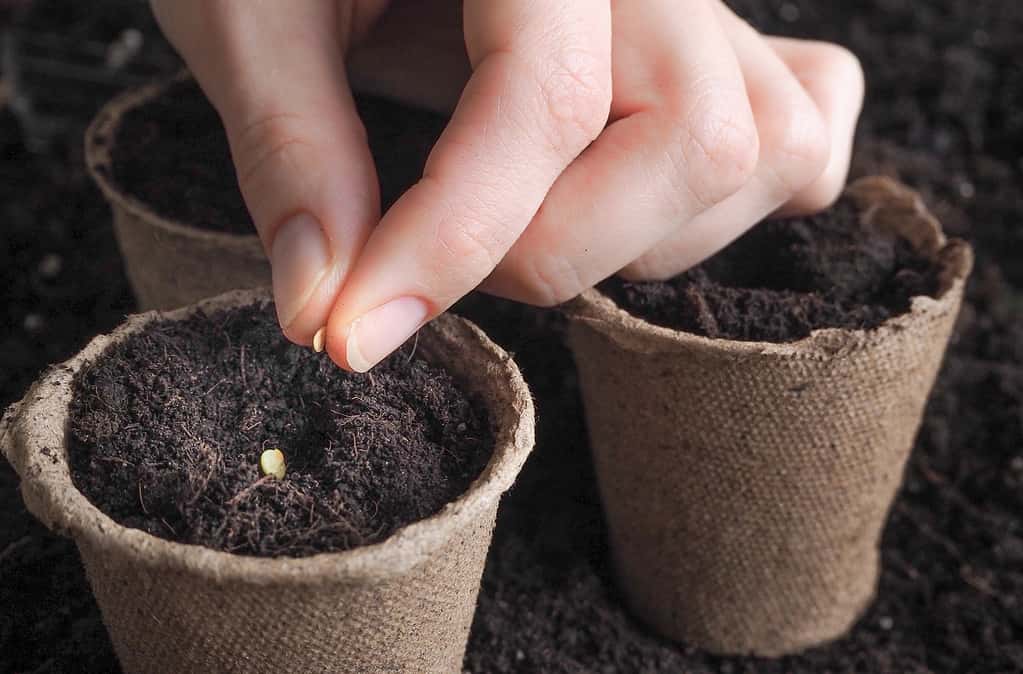
Effective fertilizing is key to basil’s plant health.
©Stanislav71/Shutterstock.com
4. Prune Your Basil
Learning the art and skill of pruning is vital if you want your basil plants to produce lots of lush and healthy leaves. The correct pruning practice will encourage healthy growth, prevent the plant from becoming too leggy, and promote the production of more flavorful leaves.
Regularly pinch or snip off the top few inches of the stem, just above a pair of leaves. This act is known as “pinching” and encourages the plant to branch out and become bushier. Start pinching when the basil plant has developed several stems with true leaves.
Harvesting, which should happen every 1 to 2 weeks during the growing season, also serves as an act of pruning. The harvesting process is when you cut off the upper leaves from your basil plants to be used for culinary purposes. These snips must be done just above a leaf node, where a new pair of leaves will grow.
You will need a sharp pair of scissors or pruning shears to make clean cuts avoiding tearing or damaging the stems of your basil plants. Always focus on removing the top growth and any flowers that may appear, which signals that the plants want to shift from leaf production to seed development.

Basil plants must be pruned regularly to stimulate abundant leaf production.
©iStock.com/panida wijitpanya
5. Harvesting basil
Basil harvesting can commence when the plants reach a decent size with several sets of true juicy leaves. The best time to start harvesting is when the plants stand around 6-8 inches tall. The plant produces more leaves for future harvests due to regular harvesting. Only select healthy stems with no signs of disease or damage.
As mentioned before, repeat harvesting should happen every 1 to 2 weeks during the growing season. These snips must be done just above a leaf node, where a new pair of leaves will appear.
As in the case of pruning, ensure that your tools are sharp and clean to ensure that the stems of the basil plants are not bruised or torn. Bruised stems can be a gateway for disease to enter the plant. Always focus on removing the top growth and any flowers that may appear, which is a sign that the plants want to shift from leaf production to seed development.

The more you harvest basil, the more it grows.
©PRILL/Shutterstock.com
6. Add Garden Buddies
Basil has several beneficial garden buddies, also known as companion plants, with which it can be planted and cultivated successfully. Basil can also positively affect various plants when used as a companion. Some plants can be beneficial to basil when they are grown alongside.
Here are some of basil’s garden buddies:
- Tomatoes and basil are classic companions. Basil can improve tomato flavor and help repel pests like aphids and whiteflies, which commonly affect tomato plants.
- Peppers (Sweets and Hot) can benefit from being planted near basil. Basil can help deter aphids and other pests that might target pepper plants.
- Cucumbers can benefit from having basil around because the strong aroma of the herb will help repel cucumber beetles, which are common pests for cucumber plants.
- Oregano is a natural companion for basil. Both herbs have similar growth habits and can thrive together. They also provide a pleasant aromatic combination.
- Marigolds repel certain pests, including nematodes, which can harm basil.
- Garlic is believed to help deter pests and can be planted alongside basil to promote healthy growth.
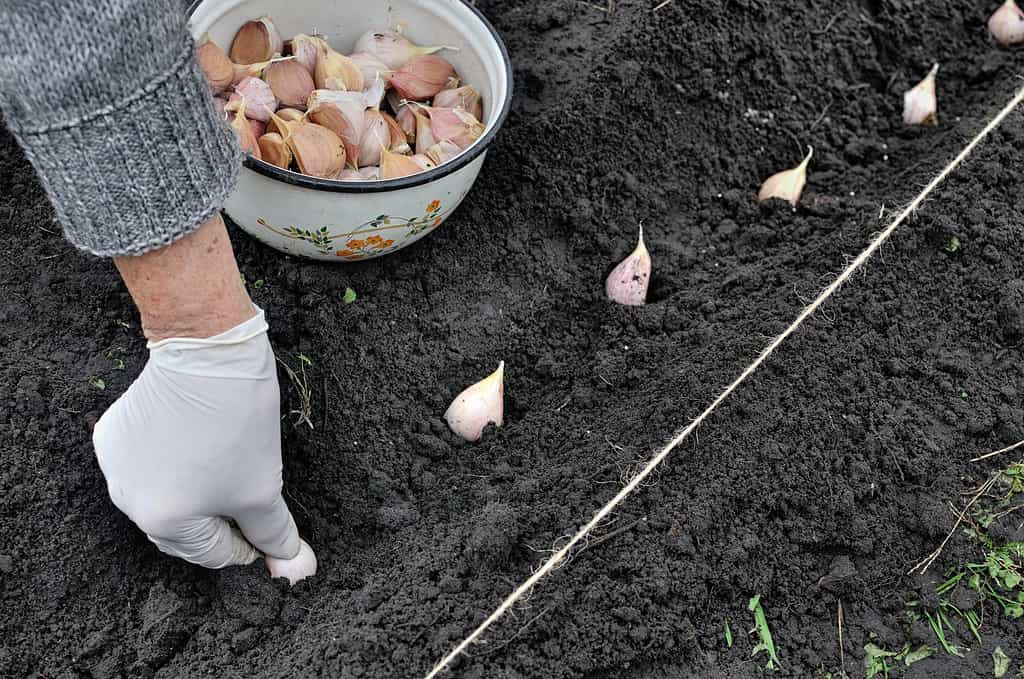
Garlic plants make excellent companion plants for basil because they can repel pests.
©yuris/Shutterstock.com
7. Use mulch
Mulching is highly beneficial for growing basil, as it provides several benefits that contribute to the herb’s health and productivity. Mulch reduces water evaporation, helping retain soil moisture. Mulch reduces water evaporation, helping retain soil moisture.
Basil prefers consistently moist but not waterlogged soil. Mulching can help maintain adequate moisture levels, especially during hot and dry periods. Mulching also helps prevent the ground from drying out too quickly between watering episodes.
Basil thrives in warm conditions, and mulching can protect the roots from temperature fluctuations, especially during cooler nights. Mulch forms a barrier that inhibits weed growth. Weeds can compete with basil for nutrients, water, and sunlight, so mulching helps keep the area around basil plants weed-free.
Organic mulches, such as compost or straw, break down over time, contributing to soil fertility, structure, and microbial activity, which can benefit plant growth.
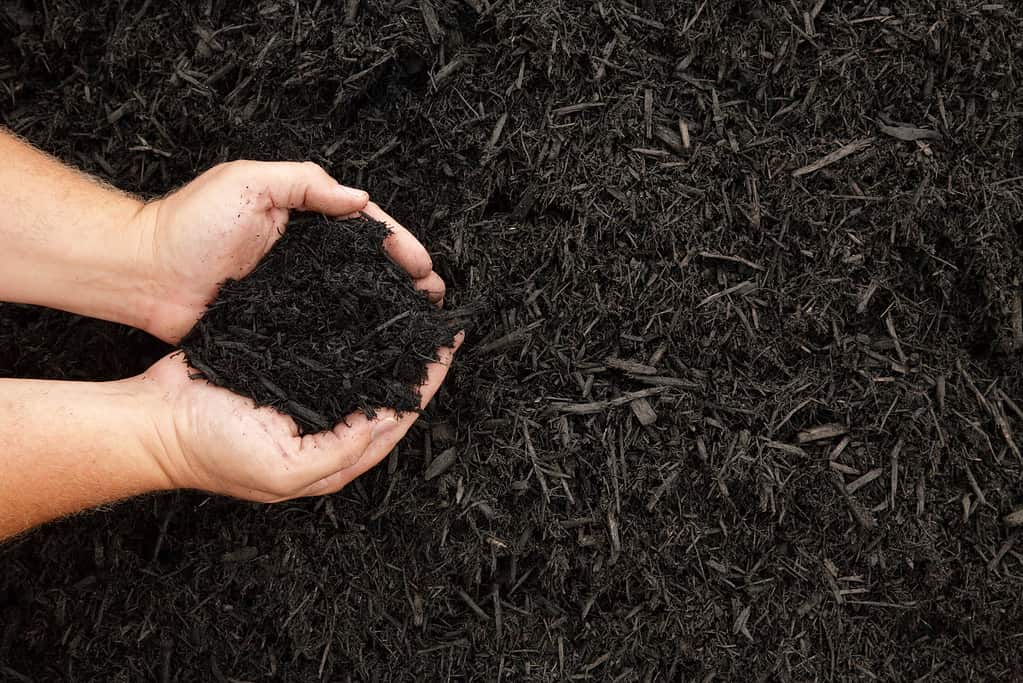
Mulching effectively controls moisture loss and regulates temperature.
©iStock.com/witmerphotography
Final Thoughts
Basil is a must-have for any keen gardener. Successfully growing this aromatic and healthy herb directly in the ground will give you an abundant supply to share with family and friends. You may even sell some on markets or through grocery stores. Knowing how to water and care for this precious herb will guarantee a generous supply of healthy basil leaves for you to enjoy and share with family and friends. Success with growing basil is easier than you think.
Thank you for reading! Have some feedback for us? Contact the AZ Animals editorial team.

